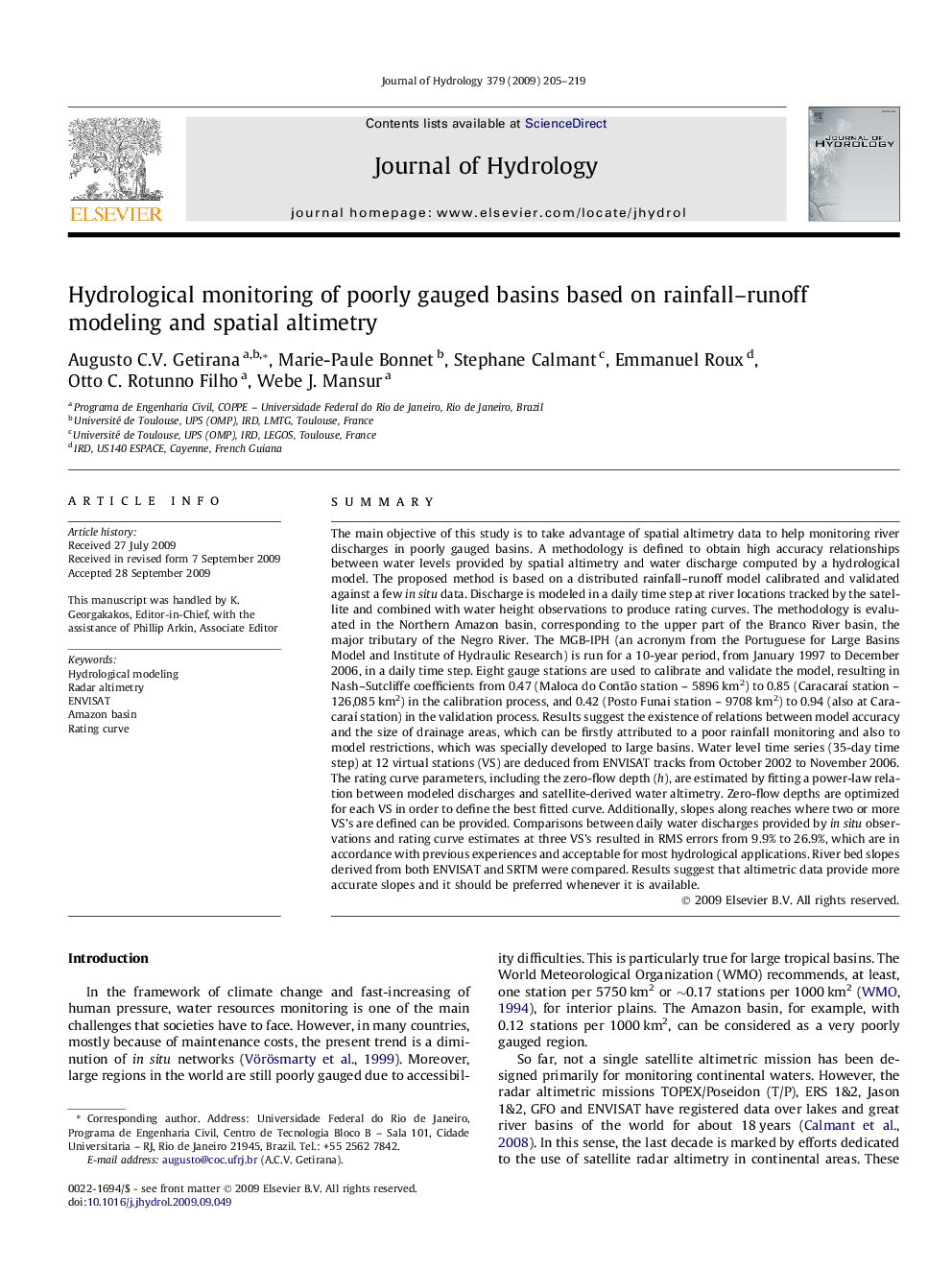| کد مقاله | کد نشریه | سال انتشار | مقاله انگلیسی | نسخه تمام متن |
|---|---|---|---|---|
| 4578566 | 1630066 | 2009 | 15 صفحه PDF | دانلود رایگان |

SummaryThe main objective of this study is to take advantage of spatial altimetry data to help monitoring river discharges in poorly gauged basins. A methodology is defined to obtain high accuracy relationships between water levels provided by spatial altimetry and water discharge computed by a hydrological model. The proposed method is based on a distributed rainfall–runoff model calibrated and validated against a few in situ data. Discharge is modeled in a daily time step at river locations tracked by the satellite and combined with water height observations to produce rating curves. The methodology is evaluated in the Northern Amazon basin, corresponding to the upper part of the Branco River basin, the major tributary of the Negro River. The MGB-IPH (an acronym from the Portuguese for Large Basins Model and Institute of Hydraulic Research) is run for a 10-year period, from January 1997 to December 2006, in a daily time step. Eight gauge stations are used to calibrate and validate the model, resulting in Nash–Sutcliffe coefficients from 0.47 (Maloca do Contão station – 5896 km2) to 0.85 (Caracaraí station – 126,085 km2) in the calibration process, and 0.42 (Posto Funai station – 9708 km2) to 0.94 (also at Caracaraí station) in the validation process. Results suggest the existence of relations between model accuracy and the size of drainage areas, which can be firstly attributed to a poor rainfall monitoring and also to model restrictions, which was specially developed to large basins. Water level time series (35-day time step) at 12 virtual stations (VS) are deduced from ENVISAT tracks from October 2002 to November 2006. The rating curve parameters, including the zero-flow depth (h), are estimated by fitting a power-law relation between modeled discharges and satellite-derived water altimetry. Zero-flow depths are optimized for each VS in order to define the best fitted curve. Additionally, slopes along reaches where two or more VS’s are defined can be provided. Comparisons between daily water discharges provided by in situ observations and rating curve estimates at three VS’s resulted in RMS errors from 9.9% to 26.9%, which are in accordance with previous experiences and acceptable for most hydrological applications. River bed slopes derived from both ENVISAT and SRTM were compared. Results suggest that altimetric data provide more accurate slopes and it should be preferred whenever it is available.
Journal: Journal of Hydrology - Volume 379, Issues 3–4, 30 December 2009, Pages 205–219